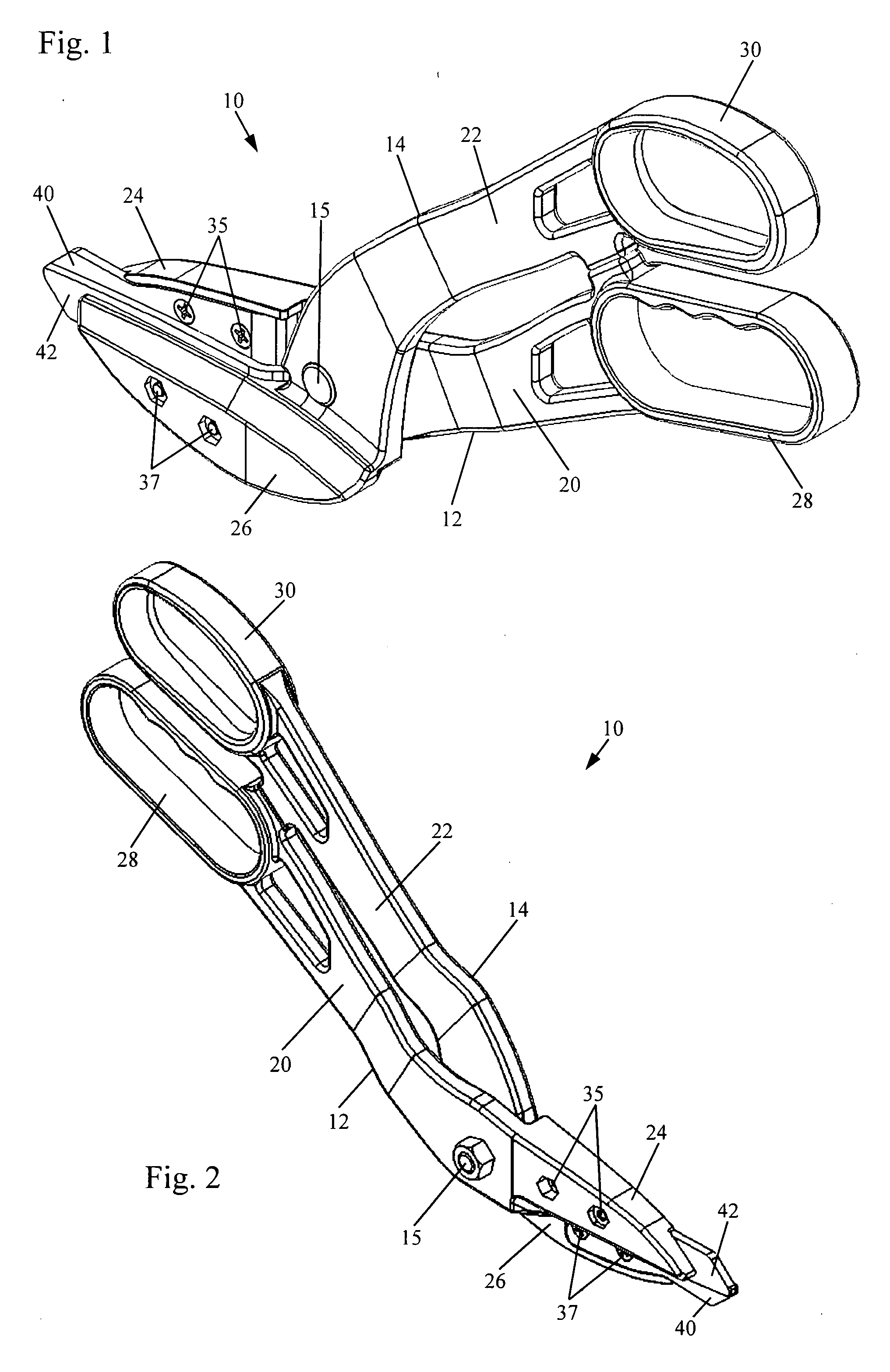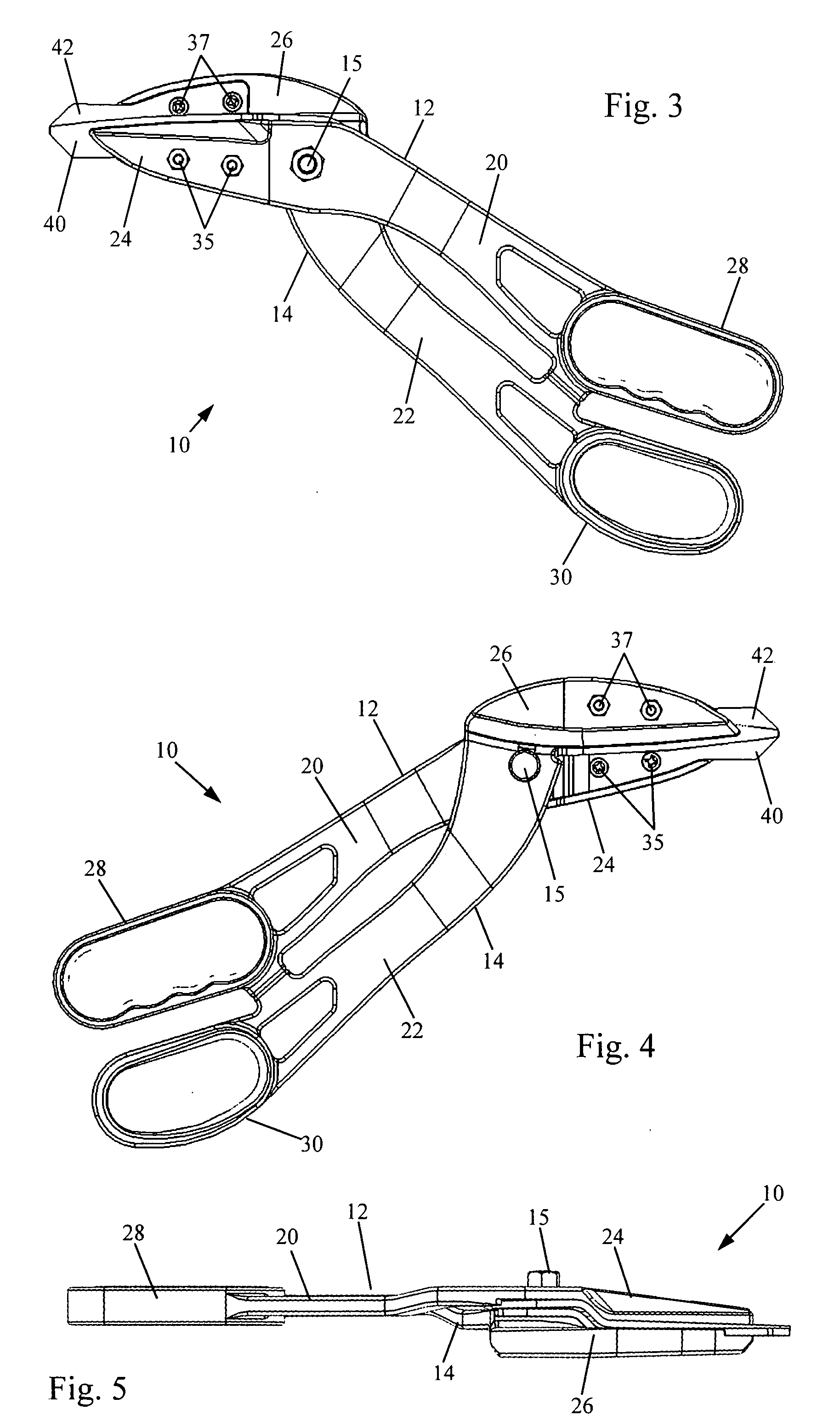Replaceable blade offset snips
a technology of offset snips and blades, which is applied in the field of cutting tools, can solve the problems of unnecessarily short life span of conventional snips, reduced performance, and narrow levers, and achieve the effects of simultaneous replacement, fast and easy replacemen
- Summary
- Abstract
- Description
- Claims
- Application Information
AI Technical Summary
Benefits of technology
Problems solved by technology
Method used
Image
Examples
Embodiment Construction
[0028]Referring to FIGS. 1-5, an illustrative embodiment of the snips in accordance with the present invention is indicated generally by the numeral 10. The snips embodying the invention are constructed of a pair of levers 12 and 14. The levers are pivotably connected to each other by a pivot fastener 15 that axially engages lever pivot apertures 16 and 18 (shown in FIGS. 6, 9, and 10) for allowing rotational movement of the levers 12 and 14 relative to one another. The pivot fastener 15 consists of a conventional nut-bolt combination, however all other means of rotatably interconnecting the levers 12 and 14 are also contemplated by this invention.
[0029]Referring again to FIGS. 1-5, each lever 12 and 14 consists of a hand grip lever arm 20 and 22 and a blade lever-arm 24 and 26 extending in substantially opposite directions from the pivot fastener 15. Each hand grip lever arm 20 and 22 and each blade lever-arm 24 and 26 has a proximal end that is closest to the pivot fastener 15 and...
PUM
 Login to View More
Login to View More Abstract
Description
Claims
Application Information
 Login to View More
Login to View More - R&D
- Intellectual Property
- Life Sciences
- Materials
- Tech Scout
- Unparalleled Data Quality
- Higher Quality Content
- 60% Fewer Hallucinations
Browse by: Latest US Patents, China's latest patents, Technical Efficacy Thesaurus, Application Domain, Technology Topic, Popular Technical Reports.
© 2025 PatSnap. All rights reserved.Legal|Privacy policy|Modern Slavery Act Transparency Statement|Sitemap|About US| Contact US: help@patsnap.com



